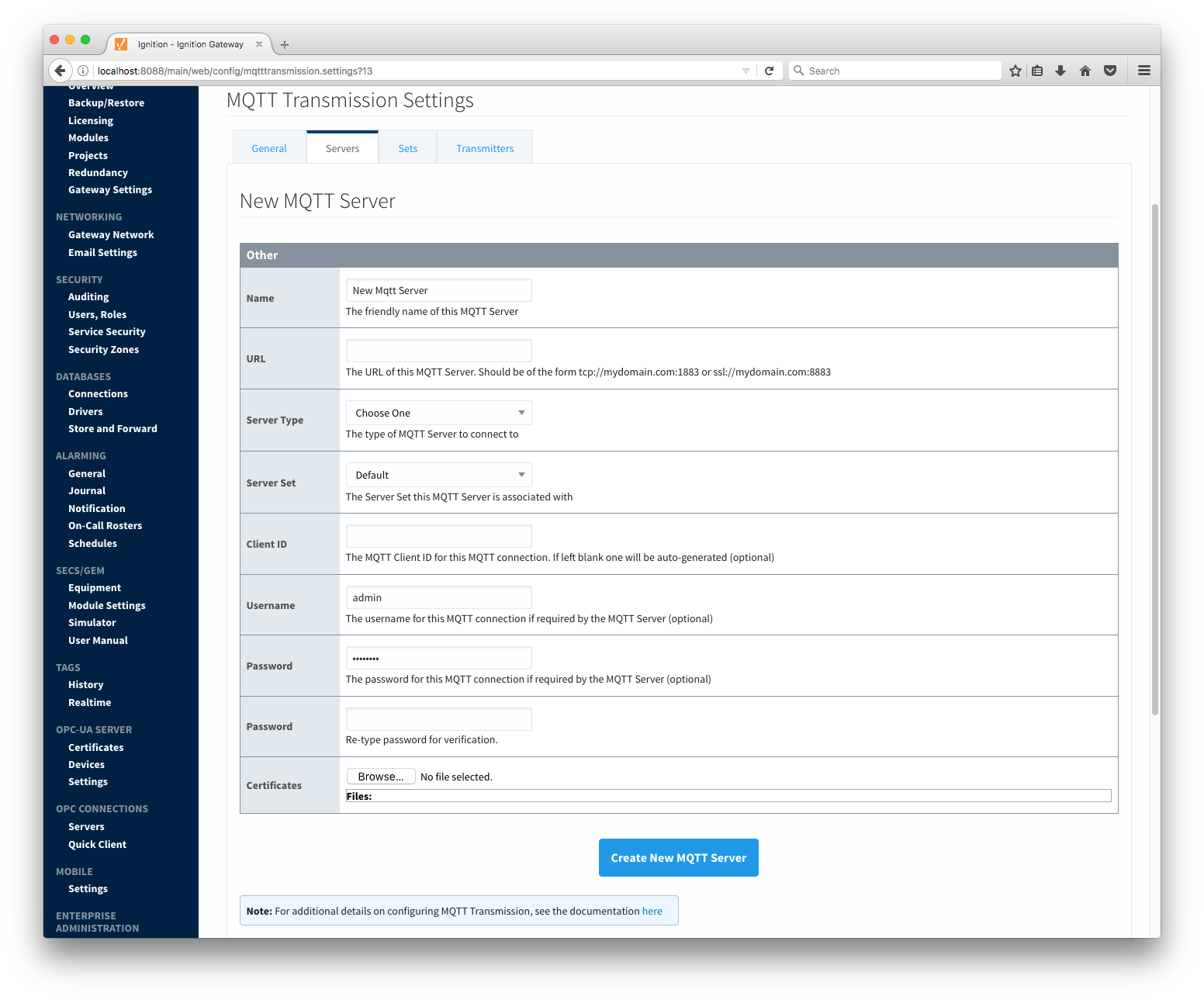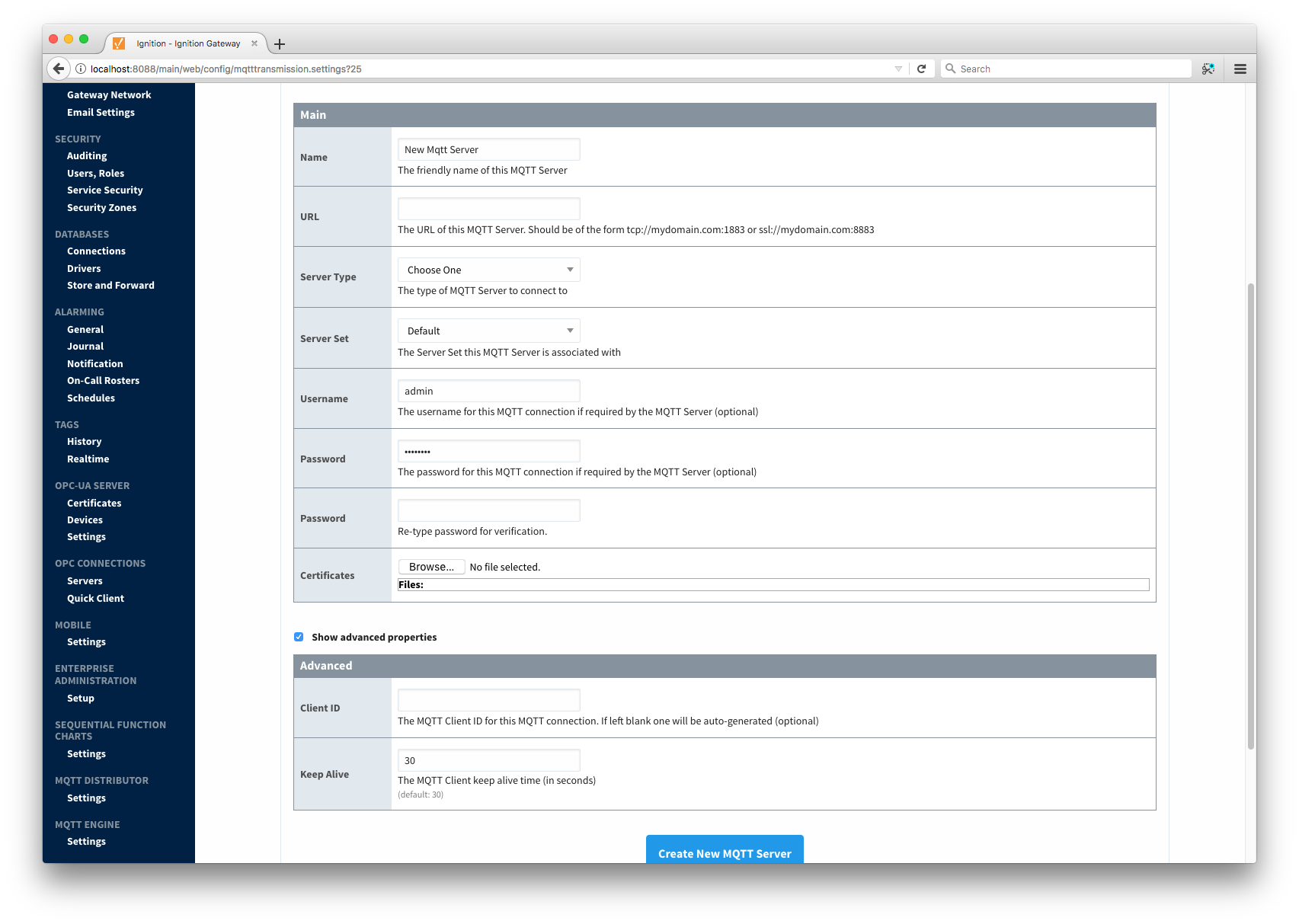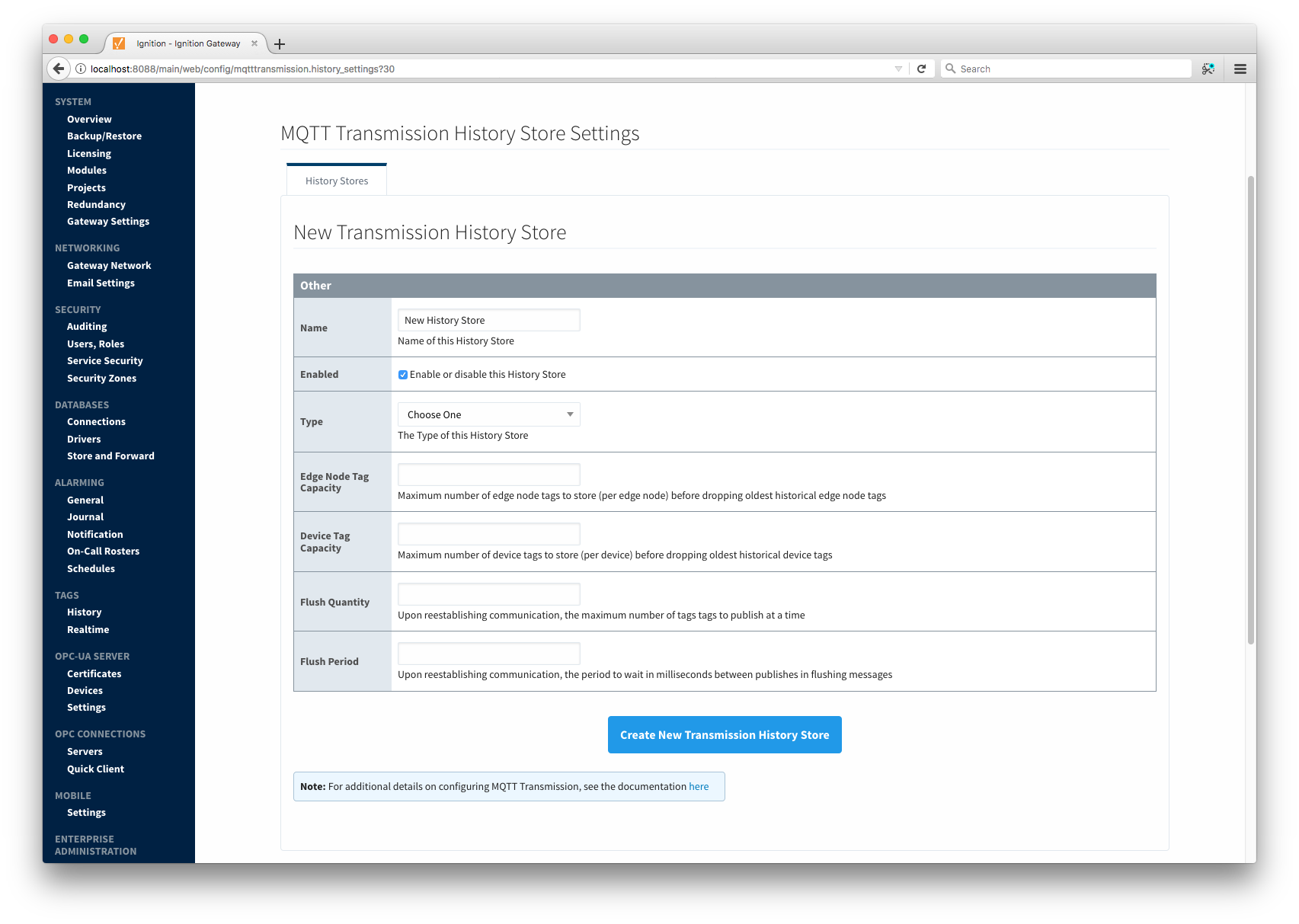...
Additional or alternative MQTT Servers can be configured in MQTT Transmission. Often times more than one will be configured to handle fail-over or in redundant or geographically distributed systems. The configuration options for servers are listed below.
Main Settings
- Name
- This is the friendly name of the MQTT Server used to easily identify it
- URL
- This is the URL of the MQTT server. Its format is as follows: [protocol]://[location]:[port]. Each of these are shown below
- protocol - Either tcp or ssl
- location - The server location. e.g. localhost, myserver.chariot.io, mydomain.com, etc
- port - The port the MQTT Server is listening on. Generally this is 1883 if using TCP or 8883 if using SSL
- Server Type
- This is the type of MQTT Server to connect to
- Chariot - If connecting to a Cirrus Link Chariot on-premise or Chariot cloud based MQTT Server
- MQTT_Distributor - If connecting to a Ignition MQTT Distributor server
- Third_Party - If connecting to a third party 3.1.1 compliant MQTT Server
- Server Set
- The Set that this server is a member of.
Client ID- Optional MQTT client ID to use. If specified this will be used in the MQTT Engine connect packet when connecting to the server. If left blank, a random client ID will be create of the form 'IgnitionTarget-xxxxxxxx-xxxx-xxxx
- Username
- The MQTT username to use in the MQTT connect packet. This is required if the MQTT Server to connect to requires it
- Password
- The MQTT password to use in the MQTT connect packet. This is required if the MQTT Server to connect to requires it
- Certificates
- The server certificates to use if required. These are generally only required when connecting using TLS and the MQTT server does not have a genuine certificate issued by a trusted certificate authority.
Advanced Settings
- Client ID
- Optional MQTT client ID to use. If specified this will be used in the MQTT Engine connect packet when connecting to the server. If left blank, a random client ID will be create of the form 'IgnitionTarget-xxxxxxxx-xxxx-xxxx
- Keep Alive
- The MQTT client keep alive time (in seconds).
Clicking on the 'Create new MQTT Server...' link will bring up the following form to add a new Server.
 Image Removed
Image Removed Image Added
Image Added
Sets
The Sets tab contains a list of server sets. Each set represents a logical grouping of MQTT servers. When a set is referenced by a Transmitter configuration a single connection to one of the servers in the set will be maintained. The other servers will act as failover in the case that a connection with the first is lost. Server sets are disjoint, meaning that a single MQTT server cannot be in more than one set.
...
- Name
- The name of the History Store.
- Enabled
- Whether the History Store is enabled.
- Type
- The type of History Store.
- Edge Node Tag Capacity
- The maximum number of edge node tags to store (per edge node) before dropping the oldest currently stored tag value.
- Device Tag Capacity
- The maximum number of device tags to store (per device) before dropping the oldest currently stored tag value.
- Flush Quantity
- The maximum number of tags tags to publish in a single message upon reestablishing communication.
- Flush Period
- The period to wait in milliseconds between publishes when flushing messages upon reestablishing communication.
 Image Added
Image Added
![]()
![]()
![]()
![]()
![]()
![]()
![]()